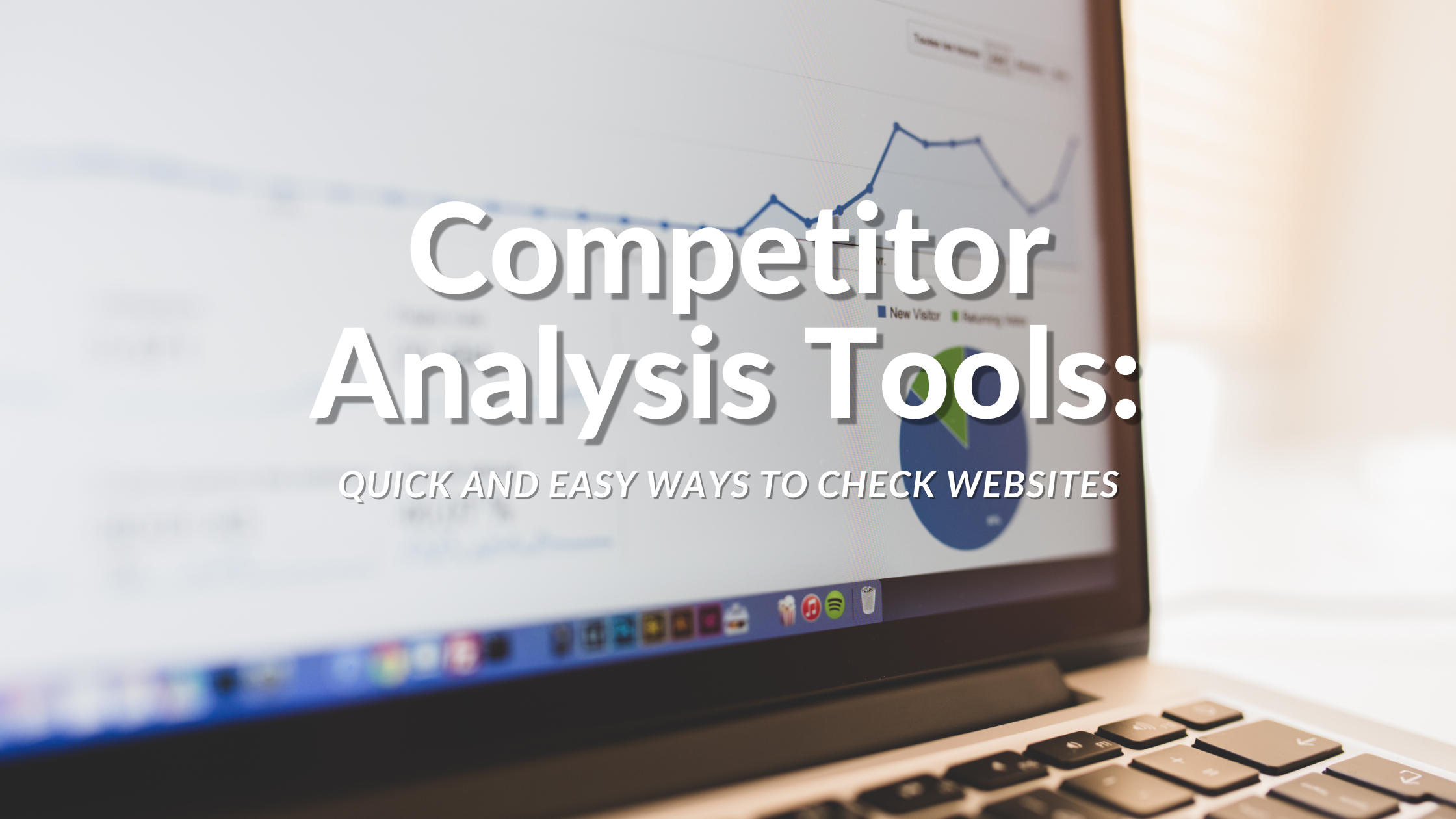Did you know that YOU can analyze your competition’s websites to gain ideas regarding your own web marketing? While you are unable to see their detailed analytics, many competitor analysis tools exist to give you quick and important insights for free.
We’ve broken up this article into two sections, in the first half we’ll discuss each type of analysis to determine the different aspects of digital marketing and any criteria you’ll need towards evaluating websites. Then, we’ll detail 14 websites that offer free competitor analysis tools. Read through the detailed descriptions for more information.
Contents
Types of Competitor Analyses to Determine How to Evaluate a Website
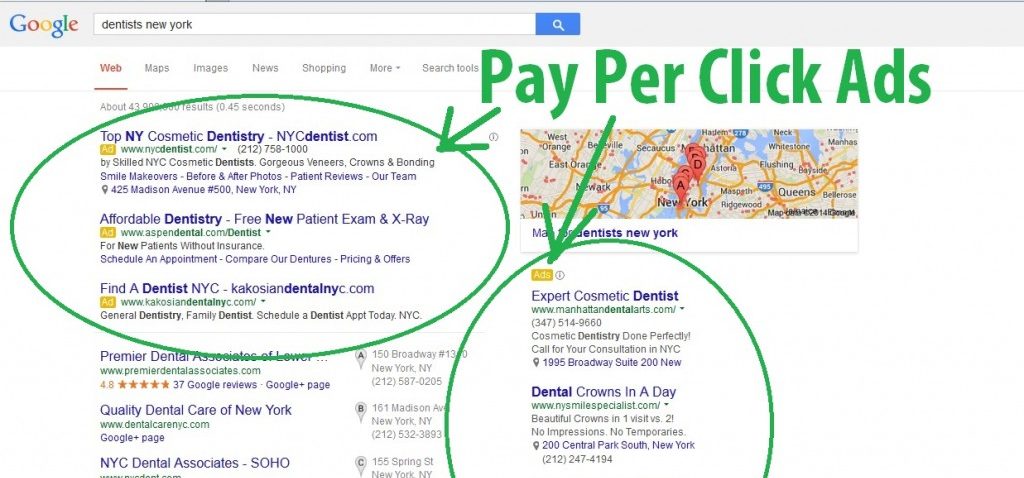 Pay Per Click and Digital Advertising
Pay Per Click and Digital Advertising
If you are wondering where competitors are investing their ad budgets, what these ads look like, or the phrases competitors bid on, you should explore this aspect.
Like organic rankings, you can watch a competitor’s ad spending to gain insight into what could be a great investment for you. If their campaigns are well-organized and enhanced, you can determine which words and phrases could gain traction for your target audience.
Search Engine Rankings and Keyphrases
Checking on your competitor’s rank will assist you in getting ideas about content and keyphrases. Without the use of a competitor analysis tool, you would only be able to search for keyphrases on your own.
Site Traffic as an Indicator of Success
If your questions deal with whether competitor sites are more popular than yours, receive more traffic, or if their visitors stay more engaged, check into this feature.
No tool can offer a complete view of competitor analytics; however, you can still find ways to gain website traffic estimates. These traffic-specific tools share the big picture, when visitors appear, the highest traffic gainers, and any demographic and behavior data.
Link Popularity and Authority
When you want to know if a competitor’s website is trustworthy or famous, if their pages seem more likely to rank, or if you can target more competitive phrases, you should explore this feature.
Sites that contain links from other websites increase their authority, especially if these sites contain high authority themselves.
Link popularity and authority tools offered by websites are proxy metrics. Aside from obtaining numbers, you can use reports from these competitor analysis tools to obtain PR chances. If any media sites or blogs have mentioned or linked to your competitor, they could be a good site to pitch for yourself.
Link popularity data’s multiple sources
Many tools track lines and offer authority metrics. Each contains its own name for the number, but all measure the same item: the possibility of ranking and a scale of 1-100. Here are some examples of websites and the names they use for these ranking numbers:
-
- SEMrush: Domain Score
- Ahrefs: Domain Rating
- MOZ: Domain Authority
- Searchmetrics: Page Strength
- Alexa: Competitive Power
Website Technology: Tools and Plug-ins
If you wonder what framework the competition builds their site on or what tracking tools they use, consider this aspect.
Most website technology is shockingly visible, and these types of competitor analysis tools assist in determining what is powering your competitors’ websites and the tools and plugins they’ve locked in. It allows for your insight into the tactics you will likely use and what could very well work for you.
Social Media
If you need to determine which of your competitors’ articles are shared the most or which social network is garnering the greatest results, you should follow this aspect.
While social media accounts can easily be watched, it is tougher to be analyzed. At one glance, you can determine the posts that gain the most audience engagement, but without further analytics tools, your study will be tedious work.
This analysis can include ideas regarding thoughts or views into what to write about, where to remain active, and who could be collaborated with.
14 Websites That Offer Competitor Analysis Tools
1. Ahrefs
Analysis Type: rankings, authority
This has no free version, but you can receive a 1-week free trial. If you join, you will have access to the biggest databases of keyphrases of any of those analysis tools: four billion keyphrases. Ahrefs remains a powerful user tool, containing multiple features aside from just keyphrase tracking. If you are thinking of targeting a phrase, you can use Ahrefs for specific reports containing search volume, competition, projected traffic, and SERP analysis.
Ahrefs gives many different reports for tracking keywords and links and they move beyond competitive analysis. For anyone serious about SEO, these reports can be powerful tools.
When a search is critical for your company, you can use either of these options: 1) the free 7-day trial or 2) the paid version for $99/month.
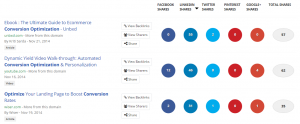
Buzzsumo analytics
2. Buzzsumo
Analysis Type: links, social media
With Buzzsumo, you can check your competitor’s highest shared posts to any social media network within any time frame. Plus, Buzzsumo will tag if the people sharing these posts are bloggers, influencers, or journalists. You will also be able to see who has linked to these posts.
In a matter of seconds, you will be able to view who is checking in with your competitors and the topics that get the most love.
If you use the free version, you gain the top five results. If you want more than that, the paid version is $99/month.
3. SpyFu
Analysis Type: authority, rankings, advertising
With this tool, you can explore deeper analysis quite easily. See which phrases are ranking on page one and determine which sites are top organic competitors. Plus, it contains a feature called Kombat, which makes it easier to compare sites. It is simple to find any insights with SpyFu.
Aside from keywords, SpyFu also tracks PPC advertising and links. It is a complete tool to allow for tracking of both your competitors and you.
The free version allows for unlimited searches with limited data and the paid version begins at $33/month.
4. SimilarWeb
Analysis Type: social media, rankings, traffic
Of all traffic estimators, this one is the oldest and most trusted. It ranks sites both globally and nationally through sites’ traffic. Also, it separates each website into categories and assigns them a rank.
Their free version remains quick to learn; however, it only portrays the top five ranking keyphrases, making it less than perfect for SEO comparisons. On the other hand, it gives you the top referring websites, which cannot be found with other tools.
The free version gives you 5 results per metric and up to 3 months of traffic data while the paid version places no limit on metrics and their cost can be negotiated.
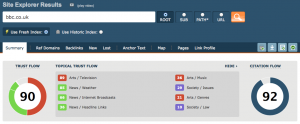
Majestic SEO analytics
5. Majestic SEO
Analysis Type: authority, advertising, rankings
Majestic contains two metrics to indicate the credibility of a domain: “trust flow” and “citation flow.” Citation flow could be more relevant and accurate for comparisons since citation flow shows how popular a URL is through backlinks. If you are lagging behind in citation flow, you can try outreach, guest blogging, and PR. Make sure you have something written that can be worth linking.
Majestic’s free version places a limit on daily usage and the paid version is $49/month.
6. iSpionage
Analysis Type: rankings, advertising
While you need to create an account for either their SEM Watch or SEO Watch version, iSpionage does a great job in grouping phrases together in regard to their corresponding page. iSpionage will give you specific trends instead of a long list of phrases, making it easier to complete analysis if you are working with a small amount of high-value phrases.
Finding the phrases competitors bid on and how those bids change is easy as well.
iSpionage does not offer a free version; their plans start at $59/month. They also offer a money back guarantee, good for 30 days for any first-time users who do not pass 1,000 downloads.
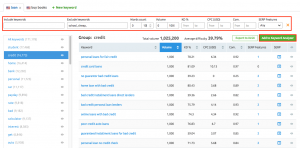
SEMrush analytics
7. SEMrush
Analysis Type: authority, rankings, social media, advertising
SEMrush allows access of both organic and paid search rankings for all sites, whether mobile or desktop, within any country. You only need to drop the URL in.
Paid users can utilize the advanced filters in order to grab the most important phrases quickly. You can filter out any branded phrases, low ranking phrases, and low volume phrases to assist with this.
If you opt for the paid version, it includes site audits, brand tracking, and more. If you use the free version, you receive the top ten phrases; the paid version costs $99/month.
8. BuiltWith
Analysis Type: technology
If you need to learn more about analyzing codes of website, this free and fast analysis tool can show you all. Enter a competitor’s site and automatically see which software and systems they are plugged into. Their marketing strategies are accessible to you with these powerful competitor analysis tools.
BuiltWith contains a popular and free Chrome extension; you only need to add this to your browser and determine what technology stands behind the websites with one click.
The free version allows unlimited searches for one individual site lookups while the paid version has two options: $295/month allows limited results, but for $495/month you gain Pro with unlimited results.
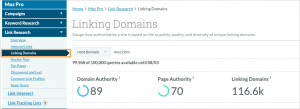
MOZ analytics
9. MOZ
Analysis Type: authority
All kinds of useful reports come from this impressive SEO tool. MOZ’s Open Site Explorer remains quite relevant for competitive analysis and remains one of the most popular tools for measuring link popularity. For their metric, MOZ utilizes “Domain Authority.”
All you need to do to use this service is add your site and check your Domain Authority. After you explore yourself, add a competitor and use “Compare Link Metrics.” Whichever site has the higher authority is likely to rank for more competitive phrases.
The free version allows for 3 searches/day while the paid version starts at $99/month.
10. Alexa Rank
Analysis Type: traffic, rankings, authority, advertising
Alexa Rank is a well-known competitive metrics tool regarding website analysis. It provides a number that marketers can obsess over. The Alexa Rank contains an estimate of ranking and popularity for every website everywhere as it ranges globally and is in every country.
The paid version holds great tools to allow you to view competitors’ rankings. One of the more popular reports is the “Audience Overlap Tool” and it can share which sites are your competition, as well as the phrases you compete with. Alexa puts everything on the table for you to view.
Alexa is one of the few tools that can predict behavior data, such as time on site or bounce rate, and demographics, like education levels and gender.
Their free version offers unlimited site info reports and you can try out their full toolset for 7-day free trial. The paid version is $149/month.
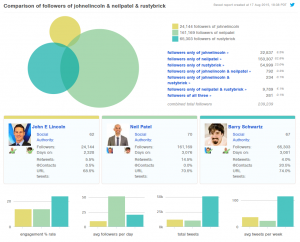
FollowerWonk analytics
11. FollowerWonk
Analysis Type: social media
While FollowerWonk only analyzes Twitter, it’s still a speedy analysis. You can determine the times of day their followers stay active, if their following is influential, where followers are located for each account, etc.
In the “compare users” section, you should be able to measure any overlap for two accounts. Furthermore, FollowerWonk shows you the growth rates of accounts.
Its free version allows for personal use and the most popular paid version is $29/month.
12. Quantcast Measure
Analysis Type: traffic
Quantcast’s paid version gives you user behaviors, lifestyle data, and demographics about visitors across apps and websites. This is a popular tool, as 15% of the top marketing websites utilize the Quantcast tracking tag.
On the other hand, the free version won’t give much. It will show traffic estimates, but you still need to create an account. From there, you will see estimated traffic levels with any website found in their system.
The free version gives basic traffic levels and the paid version is negotiable.
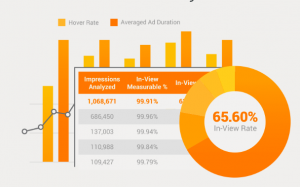
MOAT analytics
13. Moat Analytics
Analysis Type: advertising
If you know any competitors using display ads, Moat Analytics is a quick way to see their ads and their creativity, at the same time. Simply enter the brand name and search. Moat will give you ideas as to what designs and messaging work best for your company. Be sure you look for the more sophisticated brands because they will likely be the ones testing for optimizing and engagement.
The free version allows you to see display ads while the paid version gives you impressions, video ads, placement, etc., but you can negotiate the price.
14. Searchmetrics
Analysis Type: authority, rankings, advertising
It takes little effort to jump on Searchmetrics and view top phrases of any site. You will be able to see the top five phrases without an account, but the top ten comes once you sign up for a free account. With the paid version, you see all the top phrases. Reports remain incredibly easy to read and contains PPC competitive metrics as well as social media competition. You will gain detailed accounts of trends and the specific pieces of content’s performance.
The free version gives you those top five phrases within any domain while the paid version offers more for $69/month.
When to do this kind of competitive analysis
You do not always need to check out the competition, but it is especially helpful when:
- beginning any web-based business
- redesigning your website project
- twice a year to keep track of trends
That’s it. You have 14 tools to sneak peeks at your competitor’s strategies. Try not to obsess over the competition, but don’t miss the opportunity to work towards better decisions for your own business by understanding your market. Use these competitor analysis tools to your advantage and beat your competition.


